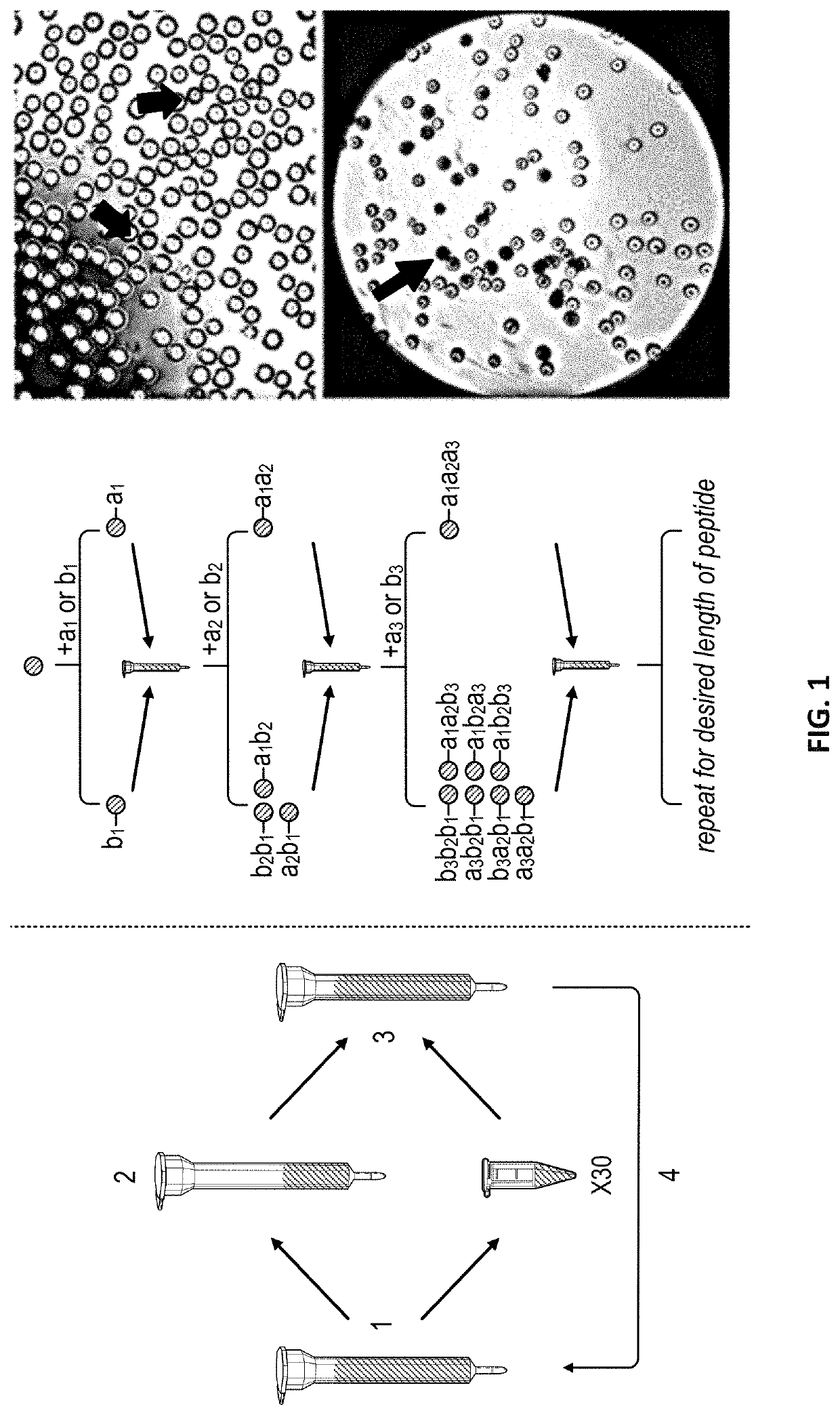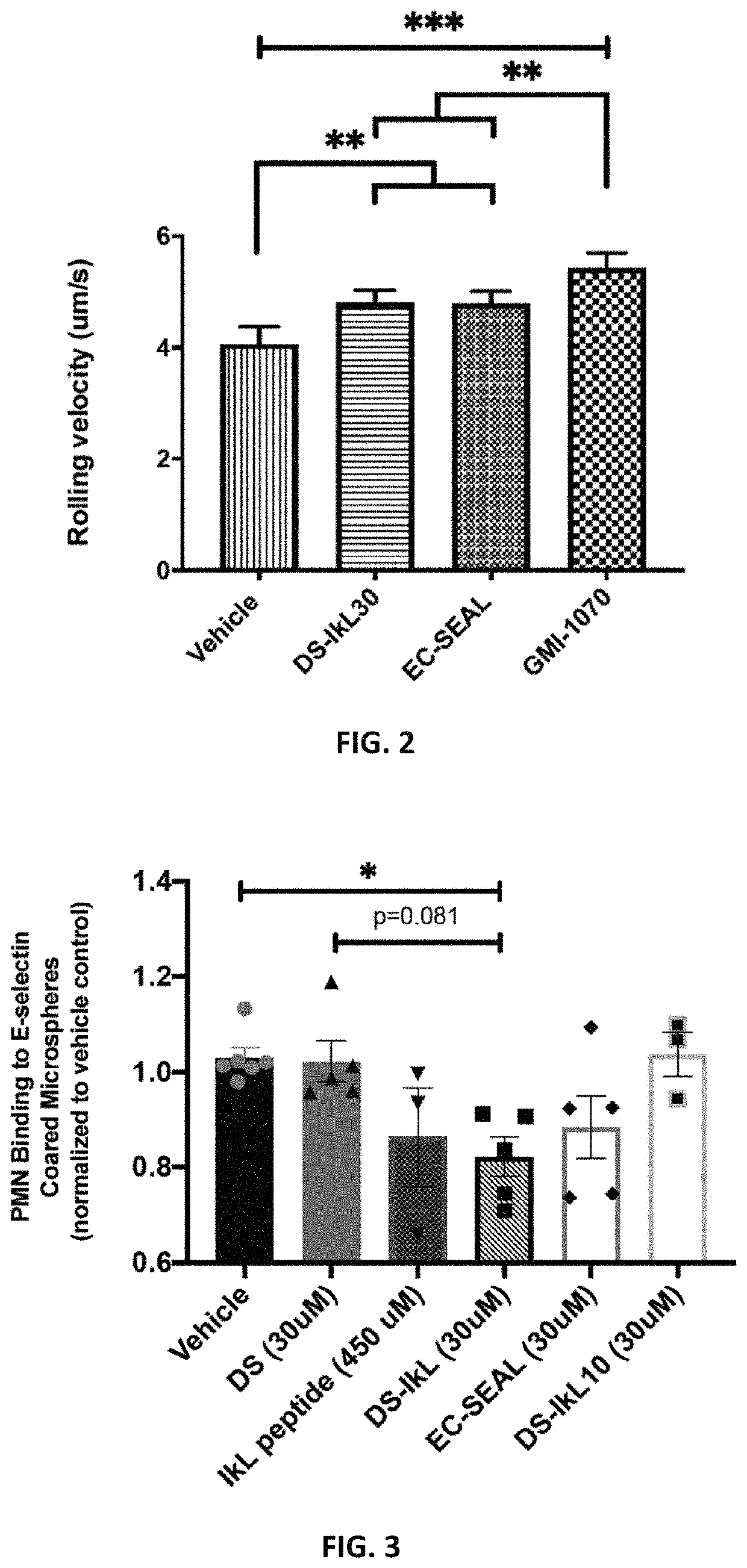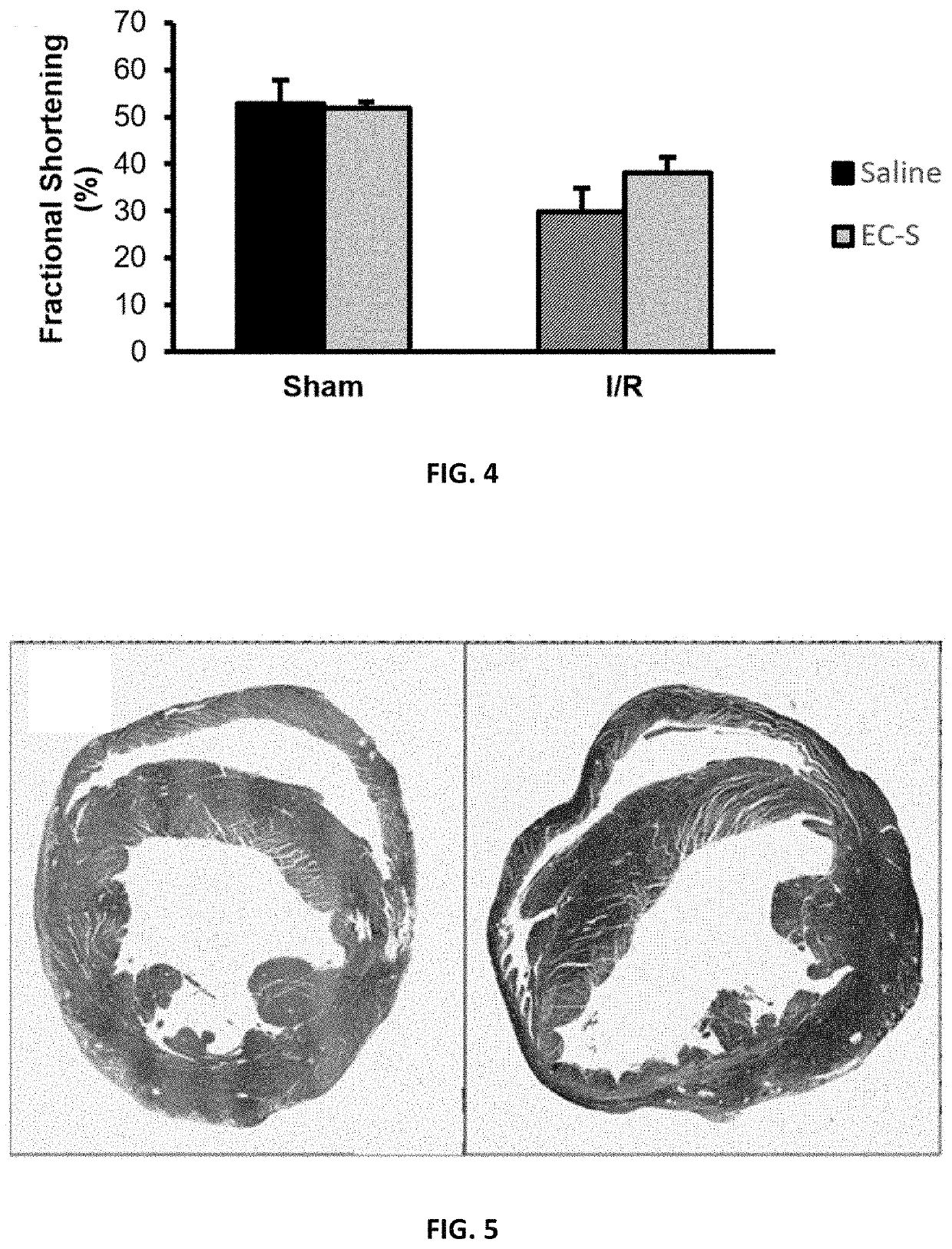Glycocalyx mimetic coatings
a technology of glycocalyx and coatings, applied in the direction of peptides, drug compositions, peptides, etc., can solve the problems of complex effects of reperfusion injury, downstream issues of ischemia reperfusion injury of reperfused cardiac tissue, and enzymatic degradation, etc., to promote neutrophil capture and activation, impaired release of nitric oxide, and loss of barrier function
- Summary
- Abstract
- Description
- Claims
- Application Information
AI Technical Summary
Benefits of technology
Problems solved by technology
Method used
Image
Examples
example 1
ation of IkL Sequence
[0105]The selectin binding peptide on EC-SEAL, IELLQARGC, is composed solely of L-amino acids, the naturally occurring enantiomer in human proteins, and is therefore susceptible to enzymatic degradation. The incorporation of D-enantiomers into the peptide was hypothesized to increase residence time of the molecule on the endothelial cell surface, thus maximizing its therapeutic effect. The one-bead-one-peptide split synthesis method (Lam K S et al. Nature. 1991; 354(6348):82), illustrated in FIG. 1, was used to create a peptide library with D- and unnatural amino acids, biased toward the IEL sequence. Briefly, Tentagel S beads were swollen in dimethylformamide (DMF) overnight, then split into polypropylene columns. One amino acid was added to each column followed by N,N′-diisopropylcarbodiimide (DIC) and hydroxybenzotriazole (HOBt) and reacted overnight at 23° C. Coupling was confirmed by ninhydrin Kaiser test. Once coupling was complete, beads were combined int...
example 2
of DS-IkL
[0106]The first iteration of DS-IkL was synthesized by first oxidizing the vicinal diol groups of DS to aldehydes by treatment with sodium metaperiodate (NaIO4). Oxidized DS was reacted with the cross-linking molecule N-[β-maleimidopropionic acid] hydrazide, trifluoroacetic acid salt (BMPH, Thermo Fisher Scientific), with the number of bound BMPH molecules, and therefore degree of oxidation, quantified using size exclusion chromatography. If 28-32 sites had been achieved, IkLLpHypRGC peptide was reacted with DS-BMPH30. Once this reaction was complete, semicarbazide hydrochloride (Sigma-Aldrich, St. Louis, Mo.) was added to reduce any unreacted aldehyde groups on the DS backbone. The product was again purified using size exclusion chromatography to yield DS-BMPH30-IkL30 (termed DS-IkL30).
example 3
DS-IkL on Polymorphonuclear Neutrophil (PMN) Rolling Velocity
[0107]To validate DS-IkL30, 25-mm glass coverslips were piranha etched and silanized with (3-aminopropyl)triethoxysilane (APTES). Silanized coverslips were functionalized with bis(sulfosuccinimidyl)suberate (BS3) and Protein A / G, then coated with 10 μg / mL of human recombinant E-selectin or E-selectin / intercellular adhesion molecule (ICAM). Coverslips were then treated with Hank's Balanced Salt Solution (HBSS+ / +), rivipansel (GMI-1070, 100 μM), EC-SEAL (30 μM), or DS-IkL30 (30 μM) for 1 hour before being assembled onto a microfluidic chip. Isolated human neutrophils were flowed over the coverslip for 10 minutes using a microfluidic flow chamber at a pathophysiological flow rate of 2 dynes / cm2. A Nikon TE2000 inverted microscope with accompanying NIS Elements software was used to capture phase contrast images of neutrophils interacting with the substrate. Images were taken every 3 seconds for 10 minutes. Neutrophil rolling v...
PUM
| Property | Measurement | Unit |
|---|---|---|
| time | aaaaa | aaaaa |
| time | aaaaa | aaaaa |
| dissociation constant | aaaaa | aaaaa |
Abstract
Description
Claims
Application Information
 Login to View More
Login to View More - R&D
- Intellectual Property
- Life Sciences
- Materials
- Tech Scout
- Unparalleled Data Quality
- Higher Quality Content
- 60% Fewer Hallucinations
Browse by: Latest US Patents, China's latest patents, Technical Efficacy Thesaurus, Application Domain, Technology Topic, Popular Technical Reports.
© 2025 PatSnap. All rights reserved.Legal|Privacy policy|Modern Slavery Act Transparency Statement|Sitemap|About US| Contact US: help@patsnap.com



